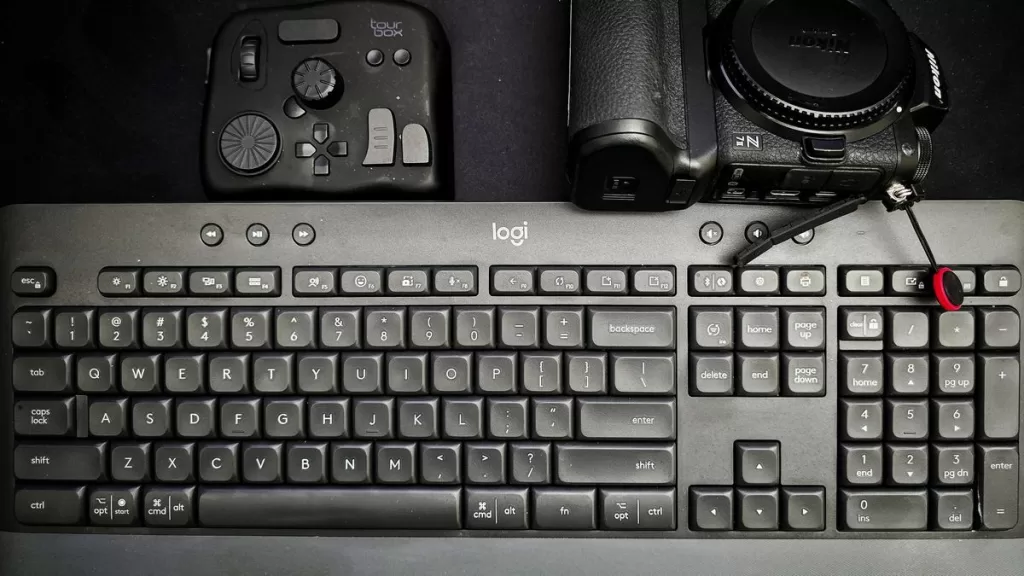Introduction
Picture this: you’ve just finished an amazing shoot with hundreds of stunning images, but now you face the dreaded keywording marathon. Hours of manually tagging each photo while your creative energy dies a slow death.
I used to waste entire afternoons buried in this mind-numbing process until I discovered something that changed everything.
What if I told you there’s a way to generate comprehensive, professional keywords for your entire photo library in minutes instead of hours? I’ve cracked the code on automated keywording using intelligent chat systems, and I’m about to share the exact prompt that revolutionized my workflow.
This isn’t just about saving time (though you’ll save tons). It’s about transforming your Digital Asset Management process into a strategic advantage that enhances client deliverables and boosts your photography business value.
I’ve put this keyword generation prompt through its paces across major platforms (Claude Sonnet 4, ChatGPT, Gemini, Grok, and DeepSeek). While the visual outputs might differ slightly, the keyword generation capabilities are remarkably consistent and reliable across these systems.
Note: Claude Sonnet 4 offers the most comprehensive response for image analysis and keyword generation.

This guide will walk you through using intelligent chat systems to create comprehensive keyword lists that accurately represent both the content and context of your images. By leveraging these tools, we can transform the often-overlooked task of keywording into a powerful asset for our work.
Whether you’re a seasoned pro or just starting out, mastering this aspect of image optimization through strategic keywords can significantly boost your content’s visibility and value. Let’s dive in and explore how to make automation work for us in creating keyword-rich, discoverable content that stands out in search results and client deliverables.
Getting Started: Your Three-Step Process
Ready to transform your keywording workflow? Here’s how simple it is.
Step 1: Choose Your Platform Open your preferred chat system: Claude Sonnet 4, ChatGPT, Gemini, Grok, or DeepSeek. Each platform delivers excellent results, though Claude Sonnet 4 provides the most comprehensive analysis.
Step 2: Select Your Image Choose a high-quality photo that represents your typical work. The clearer the image, the better the keyword results you’ll receive.
Step 3: Apply the Prompt Copy the complete prompt provided below, paste it into your chosen platform, upload your image, and watch comprehensive keywords generate automatically.
How Image Analysis Works
To generate a comprehensive list of relevant keywords, focus on the following elements:
Subject Matter: Identify the primary and secondary subjects in the image, determining the main focus.
Objects: List any notable objects or elements present, paying attention to specific details or props.
Scene: Describe the overall setting or environment, including location, time of day, and background elements.
Composition: Analyze the arrangement of elements, noting techniques like the rule of thirds, symmetry, or leading lines.
Mood and Atmosphere: Determine the emotional tone conveyed by the image and reflect on how it makes you feel.
Color Palette: Identify the dominant and complementary colors, noting how they contribute to the image’s mood and style.
Style: Classify the image’s artistic or photographic style (e.g., portraiture, landscape, abstract, fine art). Consider any specific techniques used.
Target Audience: Consider the potential demographics, interests, and search intent of those who might be interested in this image.
The Complete Keywording Prompt
This prompt is constructed to cover all essential elements needed for a comprehensive analysis, focusing on subject matter, objects, scene composition, mood, color palette, style, target audience, and SEO optimization.
Modern AI Image Analysis Prompt
As an image analysis assistant, your role is to analyze any provided image and generate a comprehensive content package along with Getty Ranked relevant keywords with SEO considerations.
1. ALT TEXT:
Generate concise, descriptive alt text (125 characters or less) that accurately describes the image for accessibility purposes. Focus on the essential visual elements that convey the image's meaning and context.
2. CAPTION:
Create an engaging, informative caption (1-2 sentences) suitable for social media or editorial use. Include context, emotion, or storytelling elements that would resonate with viewers.
3. DESCRIPTION:
Write a detailed description (2-3 paragraphs) that thoroughly explains the image content, setting, composition, mood, and any relevant context. This should be comprehensive enough for someone who cannot see the image to understand it fully.
4. SEO KEYWORDS:
Generate a comprehensive list of SEO-optimized keywords in comma-delimited format for easy copy/paste use. Include:
Primary keywords (broad, high-volume terms)
Secondary keywords (specific descriptors)
Long-tail keywords (3-5 word phrases)
Semantic keywords (related concepts and synonyms)
Technical keywords (camera settings, techniques, equipment if relevant)
Contextual keywords (location, time, event, industry-specific terms)
Consider the following elements when analyzing:
Visual Content: Subjects, objects, actions, settings, lighting, colors
Technical Aspects: Composition, style, photographic techniques
Emotional Tone: Mood, atmosphere, feelings conveyed
Commercial Value: Stock photo potential, industry applications
Search Intent: What users might search for when looking for this type of image
Getty/Stock Standards: Professional terminology and categories used by major stock agencies
Format your response as:
ALT TEXT: [your alt text here]
CAPTION: [your caption here]
DESCRIPTION: [your detailed description here]
SEO KEYWORDS: keyword1, keyword2, keyword3, long tail keyword phrase, another keyword, specific descriptor, technical term, contextual keyword, semantic variation, commercial application term, stock photo category, industry specific term.
Ensure all outputs are professional, accurate, and optimized for maximum discoverability and engagement across digital platforms. Keywords must be provided as a single comma-delimited string for immediate use in DAM systems and metadata fields.Keyword Output Example

ALT TEXT: Colorful fishing boats moored in peaceful maritime harbor Halifax with coastal village houses in background
CAPTION: Halifax Harbour's working waterfront showcases Nova Scotia's vibrant fishing heritage, where traditional lobster boats create a colorful maritime tapestry against the backdrop of historic coastal architecture.
DESCRIPTION: A picturesque Halifax Harbour fishing village scene featuring multiple colorful lobster boats including red, blue, and white vessels moored at wooden docks, with weathered shingled buildings and traditional Maritime houses dotting the hillside under a dramatic overcast sky.
SEO KEYWORDS: fishing harbor, maritime village, fishing boats, lobster boats, coastal community, Nova Scotia harbor, Atlantic Canada, fishing industry, maritime heritage, boat harbor, fishing fleet, coastal village, maritime photography, seaside town, working harbor, traditional fishing, ocean village, Maritime provinces, fishing dock, waterfront community, coastal architecture, fishing village, harbor scene, nautical photography, maritime culture, Canadian coastline, Atlantic fishing, marine industry, seaside landscape, fishing port, coastal lifestyle, maritime tourism, harbor boats, fishing community, ocean harbor, coastal scenery, traditional boats, Maritime Canada, fishing village architecture, harbor photography, waterfront scene, coastal living, maritime lifestyle, fishing heritage, Atlantic maritime, harbor village, seaside community, fishing boat fleet, coastal waters, maritime scenery, fishing industry photography, harbor landscape, coastal tourism, maritime provinces photography, fishing village scene, harbor community, coastal village life, maritime photography stock, fishing harbor landscape, Atlantic coast village, traditional fishing village, maritime coastal scene, fishing boat harbor, seaside harbor, coastal fishing community, maritime village photography, harbor scenic view, fishing fleet photography, coastal maritime sceneBest Practices for Effective Keywording
Start with Quality Images
Use clear, high-resolution photos for the most accurate keyword generation. Better image quality leads to better keyword results.
Test Multiple Platforms
Compare outputs from Claude Sonnet 4, ChatGPT, Gemini, Grok, and DeepSeek. Each platform may catch keywords others miss.
Review and Refine
Always scan generated keywords for accuracy and relevance. Remove any terms that don’t match your image or brand.
Add Your Expertise
Supplement automated keywords with industry-specific terms and client requirements that only you would know.
Stay Consistent
Develop a systematic approach that integrates automated keywords with your existing DAM workflow and taxonomy.
By implementing these best practices, you’ll harness the full potential of automated keywording assistance. This approach not only streamlines your workflow but also ensures your image library is enriched with high-quality, relevant keywords. The result? A powerful synergy of human expertise and technological efficiency that dramatically enhances your images’ visibility, searchability, and overall value.
Whether you’re managing a vast collection or curating a specialized portfolio, this method will transform your keywording process from a tedious chore into a strategic asset, positioning your work for maximum impact and discoverability in today’s digital landscape.
About the Author
Glen is a Toronto-based photographer and digital marketing strategist with over two decades of experience. As a certified Nikon Professional, he specializes in blending technical expertise with creative vision to help photographers streamline their workflows through innovative technology solutions.







